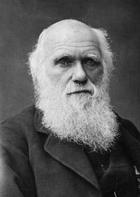
Charles Robert Darwin (February 12, 1809 - April 19, 1882) was an English naturalist who postulated that all species of life have evolved over time from common ancestors through a process called natural selection. The evolution was accepted as fact by the scientific community and much of the public life of Darwin, while his theory of evolution by natural selection was not considered as the primary explanation of the evolutionary process until the 1930s currently constitutes basis of modern evolutionary synthesis. In modified form, Darwin's scientific discoveries are still the foundation charter of biology as a science, since they constitute a logical explanation that unifies observations about the diversity of life.
With just 16 Darwin entered the University of Edinburgh, but was gradually neglecting his medical studies to pursue research in marine invertebrates. Subsequently, the University of Cambridge gave wings to his passion for the natural sciences. The second voyage of HMS Beagle established him as an eminent geologist whose observations and theories supported Charles Lyell's uniformitarian ideas, while the publication of his journal of the voyage made him famous as a popular writer. Puzzled by the geographical distribution of wildlife and fossils he collected on the voyage, Darwin investigated the fact of transmutation of species and conceived his theory of natural selection in 1838 Although he discussed his ideas with several naturalists, he needed time to conduct thorough research and his geological work had priority. He was writing his theory in 1858 when Alfred Russel Wallace sent him an essay which described the same idea, urging Darwin to conduct a joint publication of both theories.
His seminal work, The Origin of Species by Means of Natural Selection, or the Preservation of preferred Races in the Struggle for Life, published in 1859, established that the explanation of the diversity found in nature is due to changes accumulated evolution over successive generations. He tried human evolution and natural selection in his book The Descent of Man and Selection in Relation to Sex and later in The Expression of the Emotions in animals and in man. He also spent a number of publications to his research in botany, and his latest work addressed the issue of terrestrial worms and their effect on soil formation. Two weeks before his death he published a last brief work on a tiny bivalve found in the legs of a water beetle in the English Midlands. That copy was sent to him by Walter Drawbridge Crick, paternal grandfather Francis Crick, co-discoverer with James Dewey Watson of the molecular structure of DNA in 1953.
In recognition of the uniqueness of his work, he was one of the five characters of the nineteenth century non-royal UK honored with a state funeral, was buried in Westminster Abbey, close to John Herschel and Isaac Newton.




